Tender, juicy, and flavorful venison backstrap. Marinated then pan-seared or grilled until nicely browned on the outside and a little pink on the inside. Super easy to make, melt in your mouth venison recipe without the "gamey" taste.
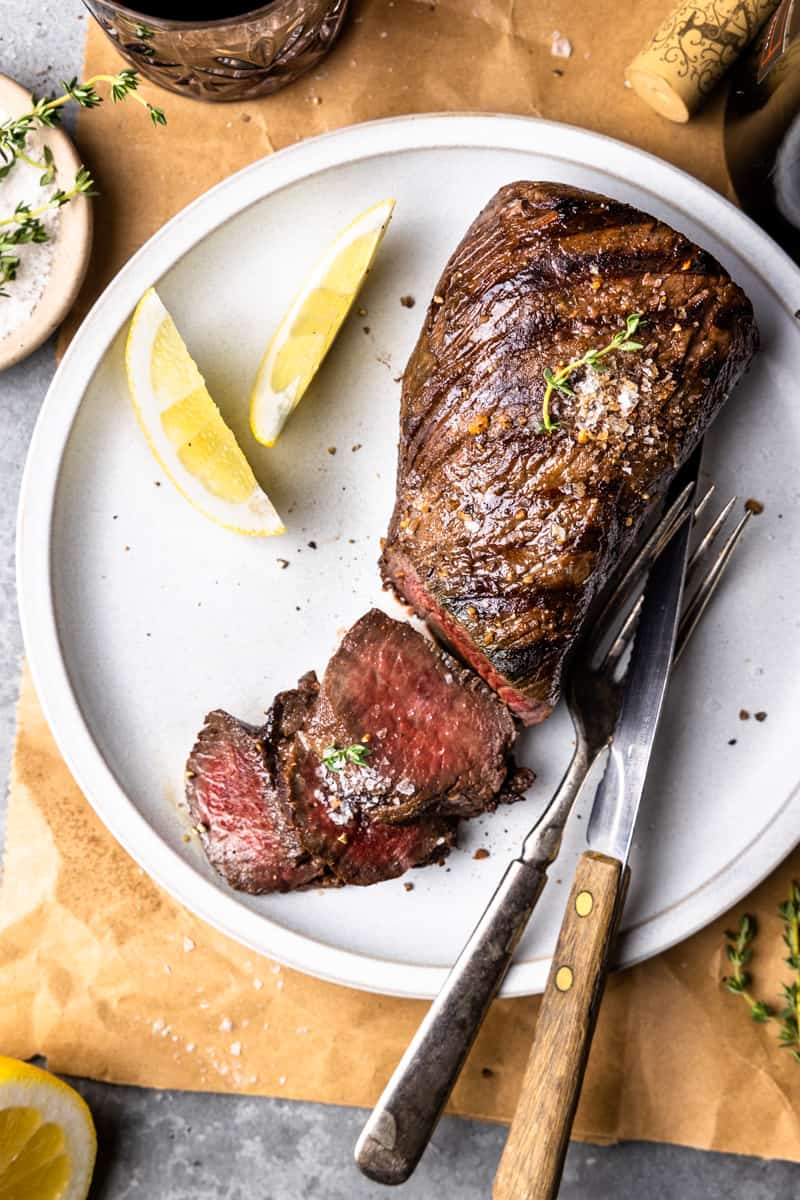
I love this venison backstrap recipe because the simple marinade adds so much flavor while simultaneously taming that strong venison flavor that often isn't loved by those newer to venison.
After marinating, there are two great ways to cook backstrap: pan-seared and oven finished or grilled. When cooked properly to the right internal temperature, venison backstrap is so tender and juicy. You're going to love it! Make sure you grab your digital meat thermometer!
What is venison backstrap, loin & tenderloin.
Venison backstrap is also known as venison loin and runs the length of the deer's back, along the spine.
However, venison backstrap/loin are not the same cut of meat as venison tenderloin. Venison tenderloin is a cut of meat under the backstrap between the ribs and the rump. It's comparable to beef filet mignon.
Click here to see where each cut of meat comes from on a deer.
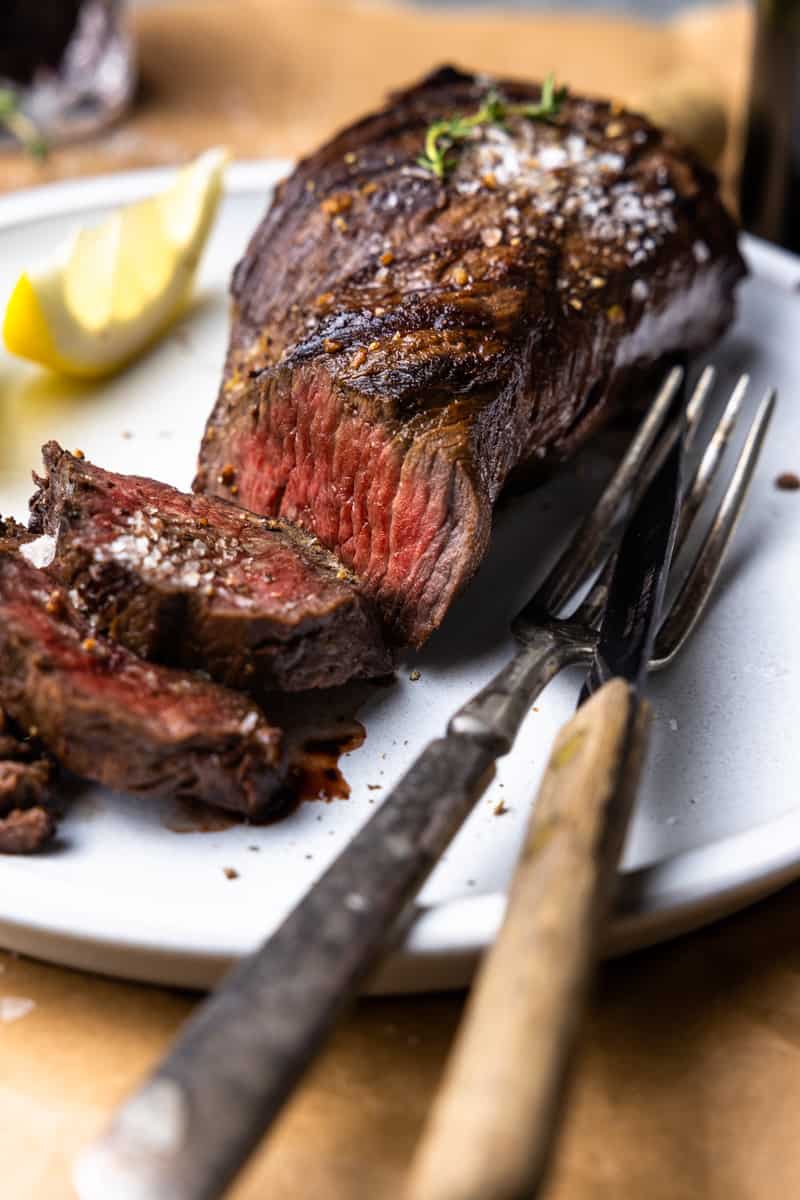
Is venison backstrap tough?
Venison backstrap is a very tender cut of meat when cooked properly. Just like a cut of steak, you want to avoid cooking overcooking it. I like to cook my backstrap to medium, resulting in a tender, juicy and flavorful cut of meat.
The marinade also helps to tenderize the backstrap, especially when left in the marinade overnight.
Is venison backstrap gamey?
Wild game tastes a bit different compared to commercially available meats. It has a strong flavor, which is often referred to as "gamey." It's important to note that "gamey" doesn't refer to spoiled meat. Because deer and other wild game animals are herbivorous creatures that forage for food, their meat will naturally taste different than the meat you're used to buying at the store.
For some, wild game is an acquired taste, and I love sharing recipe tips that tone down those wild game flavors so that even those new to eating venison (or those who don't partially enjoy the strong flavor) can still prepare and enjoy venison.
Why soak deer backstrap in milk?
Freshly harvested venison can often times have a stronger flavor, so if desired, you can soak the backstrap in buttermilk for a couple hours, or overnight, to help remove "gamey" flavor and draw out the blood. The acid in buttermilk also helps to tenderize the meat. Once you remove it from the buttermilk, give it a rinse and pat dry.
If the venison isn't freshly harvested (and it was properly processed), skip the buttermilk soak and simply add the thawed venison to the marinade. Marinating venison will help to remove "gamey" flavor while simultaneously adding lots of great flavor!
Venison Backstrap Marinade
- Olive oil
- Soy sauce
- Lemon juice
- Balsamic vinegar - or you can substitute apple cider vinegar
- Worcestershire
- Garlic
- Black pepper
Let the backstrap marinate for at least 4 hours or ideally overnight, flipping over halfway through to ensure both sides get marinated.
This is a great marinade for venison steaks, as well!
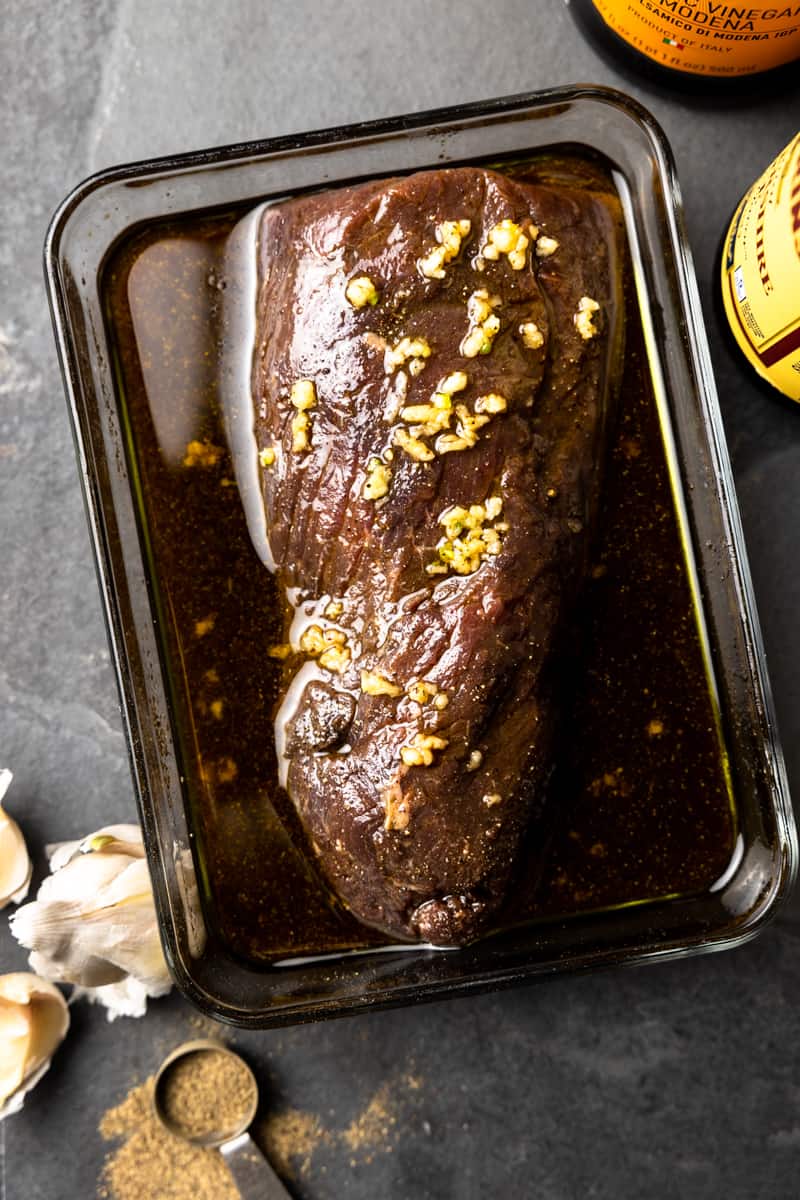
What is the best way to cook the backstrap of a deer?
There are two common methods for cooking deer backstrap, also known as venison backstrap:
- Pan seared and oven finished venison backstrap
- Grilled venison backstrap
I enjoy both methods, but I more commonly pan sear and oven finish my venison backstrap because the grilling season in Minnesota is a short one. This gives you a really nice sear, locking in all of the juices.
When cooking venison, like most meat, you should use a meat thermometer to ensure you don't overcook the meat, which causes it to become tough and dry.
Pro tip! Always account for the fact that the meat will continue to cook once it's removed from the heat source. The residual heat left in the meat will continue to cook the meat and the temperature will continue to rise 5-10 degrees. So, for example, if you want the venison backstrap cooked to medium (135 degrees F.), remove it from the heat source at 130 degrees Fahrenheit and let it rest for 5-10 minutes until it reaches 135 degrees Fahrenheit.
Pan seared and oven finished venison backstrap.
- Heat an oven-safe cast iron or stainless steel skillet over medium-high heat and add olive oil or butter.
- Sear the venison in the hot skillet on all sides until nicely browned and caramelized on the outside. While you're searing the venison, preheat the oven to 375 degrees F.
- Transfer the oven-safe skillet with the venison backstrap into the preheated oven. Bake for about 12-15 minutes or until a meat thermometer reads 130-135 degrees Fahrenheit for medium-rare to medium. Let rest for 5-10 minutes before slicing.
Grilled venison backstrap.
- Preheat the grill to medium-high heat.
- Grill the backstrap for 6-8 minutes per side, or until a meat thermometer reads 130-135 degrees Fahrenheit for medium-rare to medium. Let rest for 5-10 minutes before slicing.
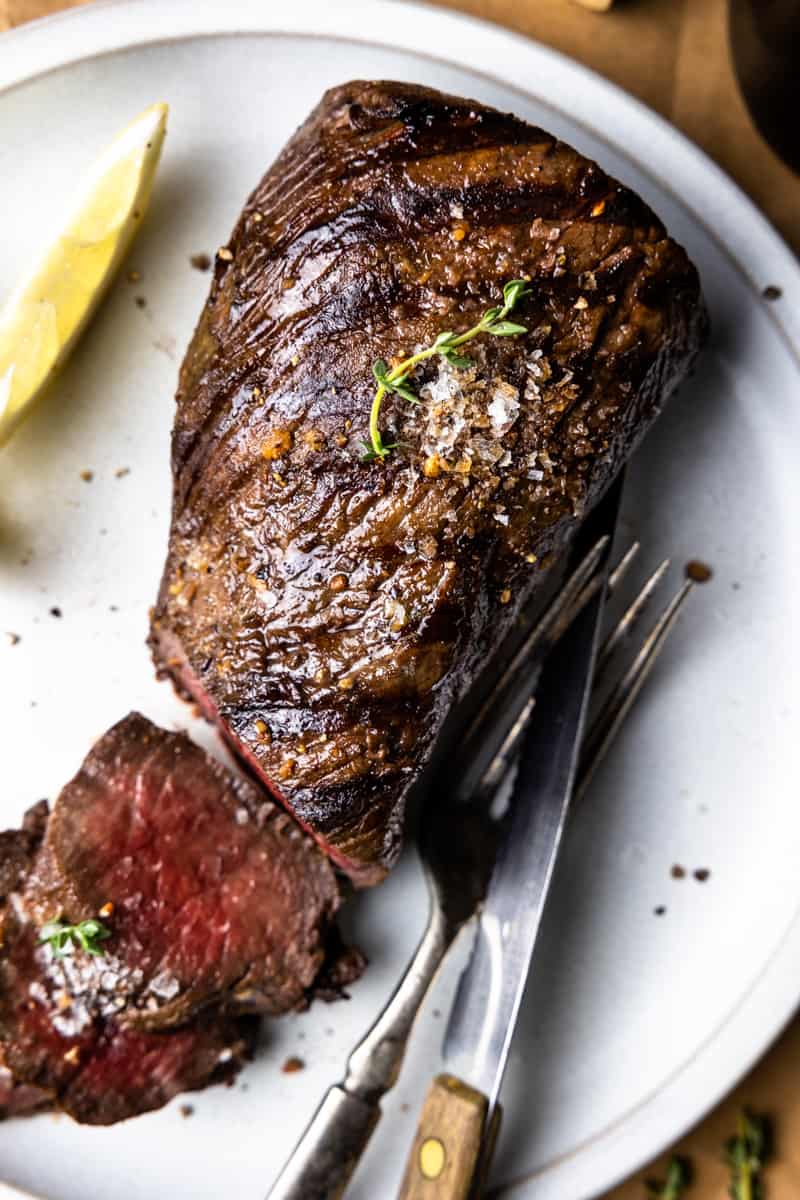
Perfectly seared venison backstrap recipe
My favorite way to sear venison backstrap is in a cast iron skillet. Heat the skillet over medium-high heat, add a big drizzle of olive oil and place the backstrap in the hot pan.
Let the backstrap sear until a nice brown crust forms. If the venison is sticking to the pan, then it hasn't seared long enough - let it continue to sear until it releases. Sear on all sides of the backstrap, including the short ends. To do so, stand the venison up in the pan using tongs.
The best internal temperature for venison backstrap
I highly recommend using a meat thermometer when cooking any meat to ensure you don't overcook it, resulting in dry, tough meat. For venison backstrap, here are the temperatures for degree of doneness:
- Rare: 125 degrees F.
- Medium-rare: 130-135 degrees F.
- Medium: 135-140 degrees F.
- Medium-well: 140-145 degrees F.
- Well: 145-150 degrees F.
I like to cook venison backstrap to around 135 degrees F. It's still pink and juicy in the center, but not raw.
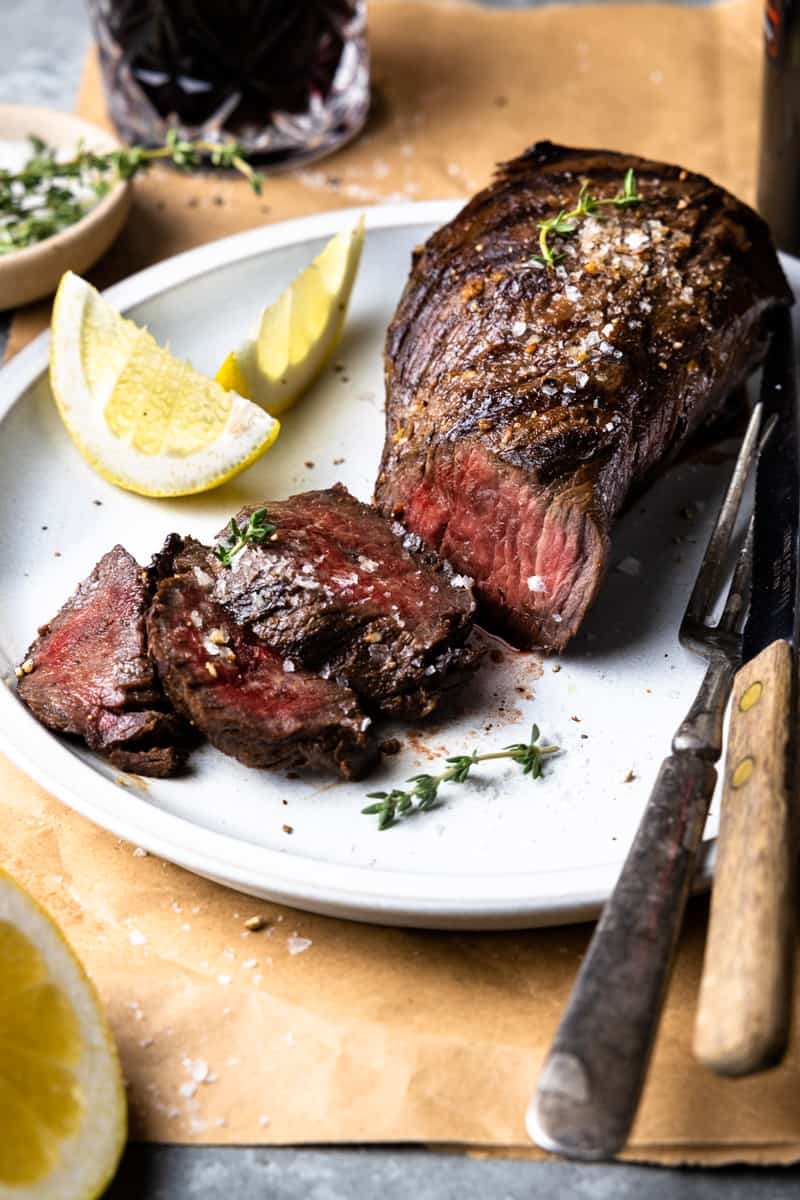
Frequently asked questions
Does deer backstrap have to be cooked all the way?
Just like cooking beef steak, you can cook venison to your desired doneness. It's actually best cooked to medium-rare or medium between 130-140 degrees F. Overcooking venison blackstrap will result in dry, tough meat.
What seasonings go best with venison?
When it comes to venison backstrap or steak, I like to marinade the meat in a salty, savory marinade. It's also great cooked with fresh herbs, such as rosemary, thyme and sage.
What is best to soak deer meat in before cooking?
The acid in buttermilk helps to tame the strong flavor of venison and tenderize a tough cut. You can soak deer meat in buttermilk overnight. When you're ready to cook the meat, rinse and pat dry.
Do you cook venison slow or fast?
How slow or fast you cook venison depends on the cut of meat. Backstrap, tenderloin, and steaks are all tender cuts of meat and should be quickly seared over high heat to get a nice sear on the outside and keep the inside pink, tender and juicy.
Roasts, ribs and shanks are a tougher cut of meat and should be cooked low and slow. Cooking the meat slowly at a low temperature breaks down the connective tissue, tenderizing the meat without drying it out.
What to pair with venison backstrap?
I like to serve venison backstrap with some kind of salad, roasted vegetables, potatoes or pasta.
Why should you let meat rest.
Cooking meat quickly over high heat draws all of the juices to the surface, so when you cut into the meat without letting it rest, all of the juices will run out, leaving you with dry meat.
So, let the cooked venison rest for 5-10 minutes after it's removed from the heat source. This allows the juices to redistribute throughout the meat, resulting in tender, juicy cuts.
More venison recipes you'll love
If you enjoyed this recipe, please leave a ⭐️⭐️⭐️⭐️⭐️ rating and a comment below! I'd love to hear from you! If you’re on Instagram, share a picture of the food you created and tag me at Modern Farmhouse Eats! I enjoy seeing all the pictures! 😊

Marinated Venison Backstrap
Equipment
Ingredients
- 1 pound venison backstrap
- ½ tablespoon olive oil
Marinade
- ¼ cup olive oil
- ¼ cup soy sauce
- 2 tablespoons lemon juice (plus lemon wedges for optional garnish)
- 2 tablespoon balsamic vinegar (or apple cider vinegar)
- 1 tablespoon Worcestershire
- 2 garlic cloves, minced
- ½ teaspoon black pepper
Instructions
Marinade
- Mix together the marinade ingredients in a shallow dish or a ziploc bag. Add the backstrap and place in the refrigerator. Marinate for at least 4 hours or up to 24 hours, flipping halfway through.
- About 30 minutes before you're ready to cook, remove the venison from the marinade and pat dry with paper towel. Set on a clean plate and allow to come to room temperature.
Pan seared and oven finished:
- Preheat the oven to 375 degrees F.
- Heat an oven-safe cast iron skillet with olive oil over medium-high heat. Once hot, add the backstrap and sear on all sides until a nice brown crust forms, including the ends by using tongs to stand the backstrap in the pan. This should take about 4-5 minutes total.
- If using an oven-safe skillet, transfer the skillet with the backstrap to the preheated oven. If your skillet isn't oven-safe, transfer the backstrap to an oven-safe dish with a little olive oil. Bake for 12-15 minutes, or until a meat thermometer reads 130-135 degrees. Keep in mind, the internal temperature of the meat will continue to rise about 5-10 degrees while the meat rests, brining it closer to medium doneness. Transfer the backstrap to a plate and loosely tent with tinfoil for 5-10 minutes before slicing.
- If desired, finish with a squeeze of lemon juice and a pinch of sea salt.
Grilled:
- Preheat the grill to medium-high heat.
- Place the backstrap on the hot grill and cook for 6-8 minutes, then flip and continue to cook another 6-8 minutes.
- The backstrap is done when a meat thermometer reads 130-135 degrees. Keep in mind, the internal temperature of the meat will continue to rise about 5-10 degrees while the meat rests, brining it closer to medium doneness. Transfer the backstrap to a plate and loosely tent with tinfoil for 5-10 minutes before slicing.
- If desired, finish with a squeeze of lemon juice and a pinch of sea salt.
Notes
- Rare: 125 degrees F.
- Medium-rare: 130-135 degrees F.
- Medium: 135-140 degrees F.
- Medium-well: 140-145 degrees F.
- Well: 145-150 degrees F.
Nutritional information is automatically calculated by a third party software and is only an estimate, not a guarantee. This information is provided as a courtesy, and you are solely responsible for all decisions related to your health.

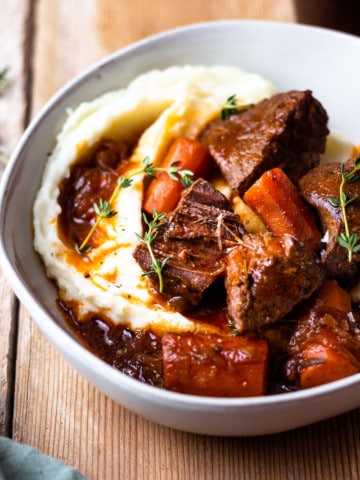


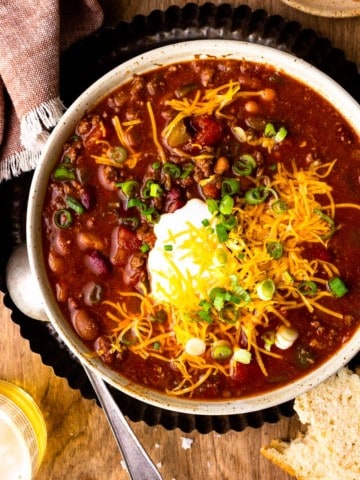




Stev Peters
Grilling instructions - Maybe add - Apply olive oil before searing on grill.
Chelsea Gonzales
The flavor was phenomenal, I added fresh Rosemary to the marinade.
However, I am young and new to cooking meat. The instructions said 4-5 minutes on all side. I literally cooked on each side 4-5 minutes which overcooked the meat and made it super tough.
Please specify 4-5 minutes total searing time for the newbies.
Thanks again! I will refer back to this recipe next time I get to cook deer.
Modern Farmhouse Eats
Chelsea, I'm sorry about the recipe confusion. I updated the instructions to make it more clear! Thank you for giving the recipe a try. I'm glad you still enjoyed it!
Vicki
Made tonight for the first time and was delicious! Husband does not like balsamic vinegar so I kept that ingredient a secret until he did the taste test. Our son said it reminded him of Black Diamond Steak. Definitely making again! Thanks for the recipe!!
Alan Greene
This was absolutely the BEST Venison I've ever eaten. I'm saving this recipe for other meats. Even the people in my family who do not eat beef or pork tried this backstrap and were amazed. There was none remaining for leftovers. THANK YOU for sharing this recipe. Sometimes, online recipes are hit or miss or everybody tries to alter the recipe before even trying it out, as written. I put mine in a freezer bag, on a plate, in the fridge and did rotate it every few hours. I don't know how much of a difference that made. That's just how I did it. I seared in a skillet and oven baked. Timing and temperature were perfect.
Alan Greene
I meant to say I marinated overnight.
Modern Farmhouse Eats
Alan, thank you so much for sharing a review! That makes me so happy to hear that the recipe was such a big hit with your whole family!! I hope you give my other venison recipes a try.
Deb
Could I use juice from an orange 🍊 instead of lemon juice?
Modern Farmhouse Eats
Hi Deb! I personally haven't tried it, so I can't say for sure, but I definitely think it's worth a shot! Since an orange is sweeter, it may change the flavor profile slightly. I would love to hear how it turned out!
hog hunting naples florida
I think this is among the so much important info for me. And i am glad studying your article. But wanna observation on some basic issues, The site style is wonderful, the articles is in reality nice : D. Just right task, cheers
Lorraine Cooper
This was such a good recipe. Inexperienced in cooking venison but I followed this to the tee and the venison was perfectly medium rare. The marinade was delicious I heated it up at the end to use as a sauce. Soaking in buttermilk is such a great idea. I soaked for about 18 hours and it didn't taste gamey at all. Thanks so much. So happy to do this meat justice.
Modern Farmhouse Eats
Lorraine, I'm so thrilled that you loved the recipe!! We work so hard to harvest venison, so it's so important to find good recipes. Thanks so much for sharing a review. I hope you give some of my other venison recipes a try!
Roxanne
This made for such a delicious tasting nilgai backstrap. Ours was a bit thin but I just watched the time and took it out at 10 minutes. So delicious this will be my go to recipe for wild game.
Savannah
Just made this for lunch for my family and my husband's friend, who had given us the backstrap. Rave reviews from everyone. Your marinade is pretty much exactly what I would do, without a recipe. I was searching for a recipe, mainly for the cook time and temperature, because I really did not want to accidentally overcook it. It was perfect, thank you!
Modern Farmhouse Eats
Savannah, I'm so glad you all enjoyed the recipe!! Thanks so much for leaving a review!
Anonymous
This recipe is amazing, easy, delicious and it’s similar to one my grandmother use to make. I have been deer hunting since I was a young girl so I am very familiar with preparing venison ! Thank you so much for posting this, my husband and son love it.
Modern Farmhouse Eats
Always nice to hear from fellow female deer hunters 😊 I'm so happy that your family enjoyed the recipe! Thank you for the review!
Trendal
Very nice. We were out of soy sauce so I subbed with Worcestershire, sprinkled with garlic salt and lots of ground pepper at the grill Apple Cider Vinegar and 3x ground pepper in the marinade. Grilled over mesquite but I put almond wood on right before meat so I have flames coming through the grate. Let it sit till one side it showing a little color, roll it and clap the lid on. The almond wood snuffs out and becomes a smoker. Couple more minutes and it's done.
Modern Farmhouse Eats
Trendal, that sounds amazing!! I'm so glad you enjoyed the recipe. Thanks for sharing your tips and tricks!
Rob
You knocked this out of the park. My wife and daughter both loved it. It is a special occasion when they both approve of wild game recipes. I will be making it again soon. Thanks for taking the time to share it.
Modern Farmhouse Eats
Rob, I am very happy that your family enjoyed the recipe!! 😊 Thank you so much for the review!
Linda
This recipe is just awesome. I made the oven bake method. I’ve never cooked venison tenderloin before and had my doubts as to how it would turn out. I followed the recipe precisely and it really was the most delicious tenderloin I’ve ever had even compared to beef. Thanks so much!
Modern Farmhouse Eats
Linda, this makes me so happy! We work so hard to harvest a limited supply of deer meat, so making sure it's cooked perfectly can be intimidating. I am so glad that you enjoyed the recipe!